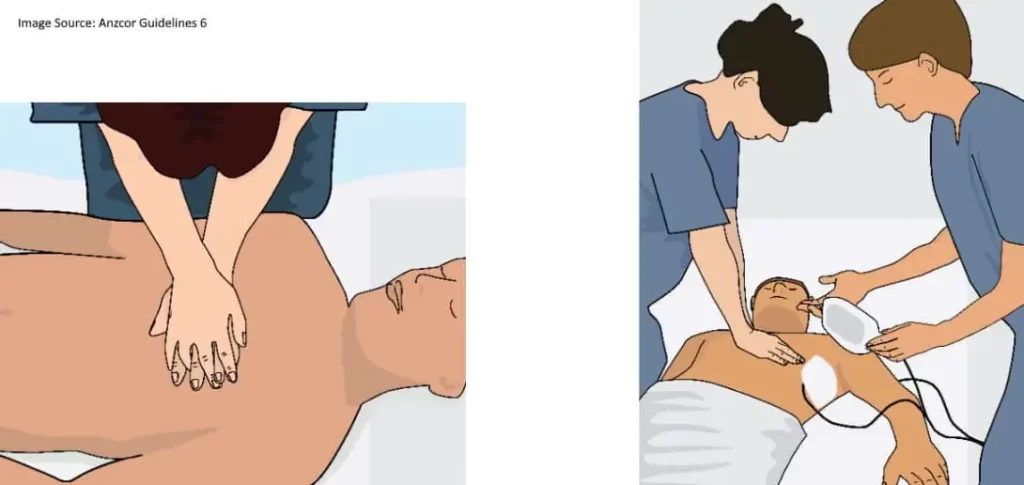Training and Assessment Delivered on Behalf of Allens Training Pty Ltd RTO 90909
3 Tips for Giving Great CPR Compressions
6 out of 10. That’s how many medical professionals CPR was not as good as it could be according to one study. Giving good CPR is challenging, but not impossible! Let’s look at 3 brief reminders that will help!
1. CPR Depth
When performing chest compressions you should press down around 1/3 of a patients chest depth. That’s usually a little more than 5 cm on an adult. The trap? Fatigue makes it hard keep up that depth. One study showed that compressions often become shallow after only a minute.
What can you do about it? Be conscious of the need to keep pushing hard. If possible, change rescuers at least every two minutes to help prevent fatigue.

2. CPR Location
Where should your hands be when you give chest compressions? With your palm on the lower half of the sternum, slightly below the nipple line. Why is it important to have the correct location ?
Because chest compressions become ineffective if they are too high, and if they are too low, it can cause damage to internal organs or make the patient regurgitate.

3. Compression Rate

The optimal rate for chest compressions is 100 to 120 compressions per minute. That’s about the same rate as songs like “Stayin Alive” by the Bee Gees or “Another One Bites the Dust by Queen.” CPR provides circulation for the heart and brain, so going outside of this range is associated with a lower rate of survival.
We hope these 3 reminders will help you give great CPR. We would love to help you keep you keep your First Aid knowledge up to date. If you have 6 or more staff to train we would love to come train onsite. Call us on 1300 115 193 or request a First Aid Course Quote.
References for this article:
Anzcor Guidelines #6 https://resus.org.au/guidelines/anzcor-guidelines/
JAMA Issue January 19, 2005 https://jamanetwork.com/journals/jama/issue/293/3


